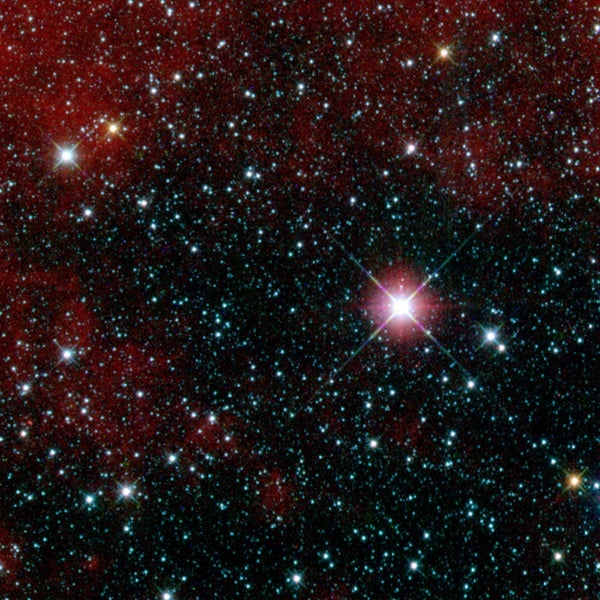The image was captured as the spacecraft stared in a fixed direction, in order to help calibrate its pointing system. The mission’s survey will be done while the satellite continuously scans the sky, and an internal scan mirror counteracts the motion to create freeze-frame images. The team is working now to match the motions of the spacecraft and the scan mirror precisely.
This eight-second exposure shows infrared light from three of WISE’s four wavelength bands: Blue, green and red correspond to 3.4, 4.6, and 12 microns, respectively.
NASA’s Wide-field Infrared Survey Explorer, or WISE, has captured its first look at the starry sky that it will soon begin surveying in infrared light.
Launched December 14, WISE will scan the entire sky for millions of hidden objects, including asteroids, “failed” stars, and powerful galaxies. WISE data will serve as navigation charts for other missions, such as NASA’s Hubble and Spitzer space telescopes, pointing them to the most interesting targets the mission finds.
A new WISE infrared image was taken shortly after the space telescope’s cover was removed, exposing the instrument’s detectors to starlight for the first time. The picture shows about 3,000 stars in the Carina constellation.
The image covers a patch of sky about 3 times larger than the Full Moon, and was presented January 6 at the 215th meeting of the American Astronomical Society in Washington, D.C. Scientists selected the patch was because it does not contain any unusually bright objects, which could damage instrument detectors if observed for too long. WISE captured the picture while the spacecraft was staring at a fixed patch of sky. The image is being used to calibrate the spacecraft’s pointing system.
When the WISE survey begins, the spacecraft will scan the sky continuously as it circles the globe, while an internal scan mirror counteracts its motion. This allows WISE to take “freeze-frame” snapshots every 11 seconds, resulting in millions of images of the entire sky.
“Right now, we are busy matching the rate of the scan mirror to the rate of the spacecraft, so we will capture sharp pictures as our telescope sweeps across the sky,” said William Irace, the mission’s project manager at NASA’s Jet Propulsion Laboratory in Pasadena, California.
To sense the infrared glow of stars and galaxies, the WISE spacecraft cannot give off any detectable infrared light of its own. This is accomplished by chilling the telescope and detectors to ultra-cold temperatures. The coldest of WISE’s detectors will operate at less than 8 kelvins, or –445° Fahrenheit (–265° Celsius).
The first sky survey will be complete in 6 months, followed by a second scan of one-half of the sky lasting 3 months. The mission ends when the frozen hydrogen that keeps the instrument cold evaporates away, an event expected to occur in October 2010.










